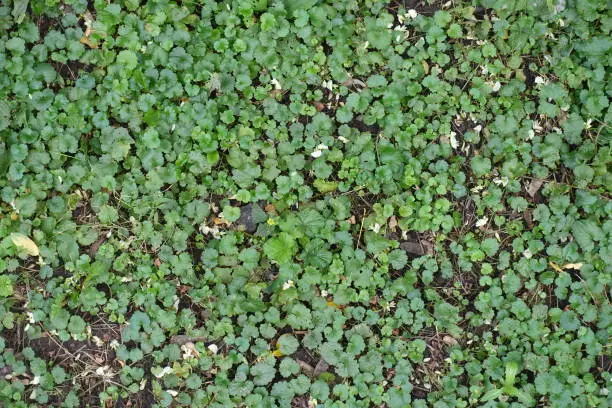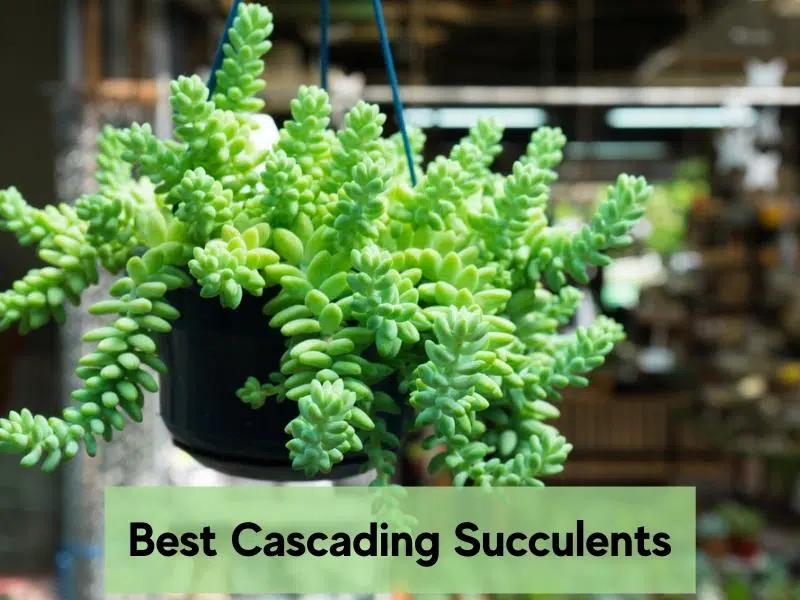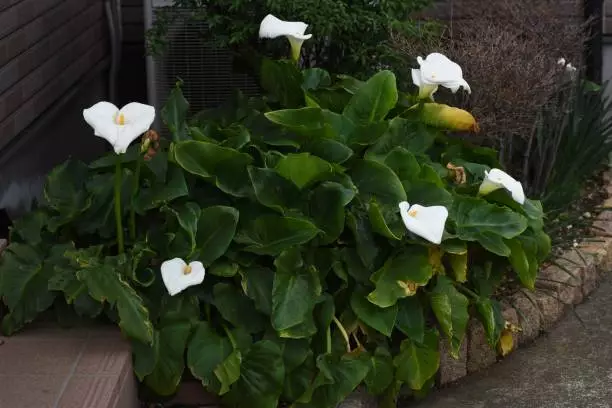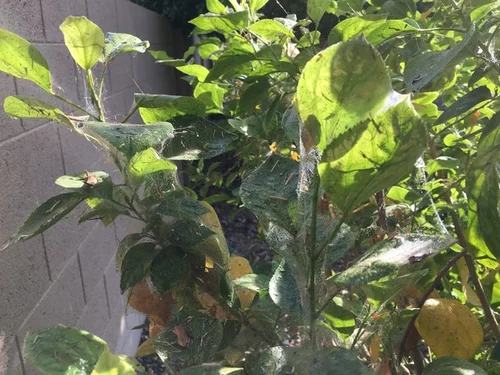Flies like compost because it guarantees them a constant food supply and a suitable place to lay and hatch their eggs. The pesky insects are not just a nuisance at home but they also carry disease vectors that can be harmful to people and pets. If you maintain your compost properly, it will not attract flies or spread the diseases associated with them.
Are flies in compost good or bad?
Flies in compost are good because they help the decomposition process alongside other microorganisms to speed the breakdown of organic material in your compost. However, not all species of flies are good. Houseflies aren’t good but vinegar flies that are attracted to the yeast from ripening fruit are good.
Vinegar flies and black soldier flies help with the decomposition process. But an infestation of these flies in your compost requires urgent intervention because they lay eggs and multiply fast.
Black soldier fly larvae usually infest compost bins that have large holes in them, so you want to make sure you check on that if you’re dealing with their infestation.
Any type of flies, including tiny fruit flies, may move from filth to food, potentially causing food poisoning and life-threatening diseases.
Why are there many flies in my compost bin?
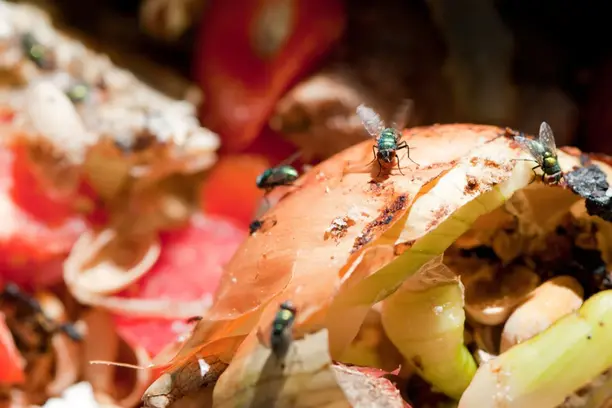
Your compost bin will attract many flies if there is no proper compost pile management in place. Here are reasons your compost bin attracts flies:
Uncovered and leaking garbage cans
Uncovered garbage cans offer a convenient location for flies to lay and hatch their eggs. A few flies can multiply rapidly inside the decaying matter in your garbage tin. Although flies live between 15 and 30 days, females will lay up to 150 eggs in a single batch.
In uncovered and leaking garbage cans, where flies find food and shelter, they can lay up to six batches of eggs in just a few days. The eggs will turn into adult flies in about 3 weeks, increasing fly infestation in your compost bin and home.
Disposing of meat, chicken, and fish bones in the compost
Meat, chicken, and fish remains will become rancid in the compost and emit foul odors. The bones and remains will attract various pests e.g houseflies to your compost bin. If your house produces many fish and meat remains, you will need a closed compost or mix the remains with plant waste before burying them at the center of the pile.
Rainwater percolation in the compost
Flies do not like dry compost. Although water is essential for compost decomposition and temperature regulation, too much of it from the rain may hurt your compost. According to Aggie Horticulture College Station, compost moisture exceeding 60% discourages aerobic decomposition and promotes anaerobic bacteria.
Rainwater ferments the compost materials and attracts fruit flies and filth flies due to the rotting and carbon dioxide byproducts. The flies will quickly breed and multiply on the decaying fruits and organic matter in your compost.
Absence of the flies’ natural predators
Flies also have their natural predators. If many flies are coming from outside into your house, it means there are no frogs, spiders, or birds to feed on them near your compost bin’s location. Other predators feed on flies at their different life stages. For example, some parasites and parasitoids are effective predators against the eggs, larvae, and pupae of flies.
The absence of these predators means a successful life cycle of flies and many flies in your compost bin.
Piling of waste
Piling waste without a proper waste management plan is another leading cause of flies in compost. Just piling waste increases fly food, temperature variations, and an uneven rotting that will encourage flies in your compost bin or worm bin. It also increases the likelihood of water pollution and the spread of infectious diseases.
Common types of flies in compost bins
Poorly maintained compost bins will attract several species of flies. The most common types are house flies and fruit flies.
Here is a brief overview of the common types of compost
Fruit flies
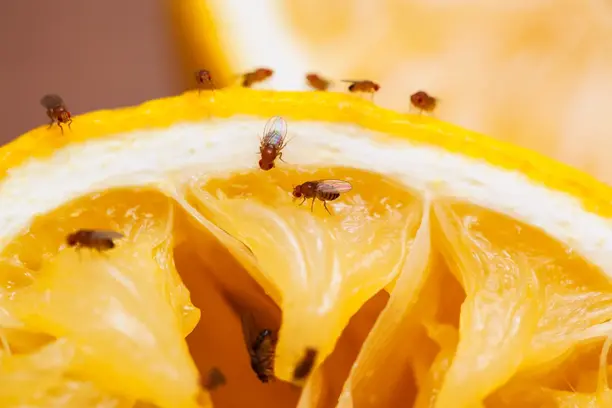
Fruit flies are mistakenly known as vinegar flies. You will identify them by their red eyes, tan bodies, and black abdomen. These pests are usually so tiny, with adults growing to about one-eighth of an inch. Fruit flies may seem to appear out of nowhere but that’s because they breed and develop so fast around rotting fruits and vegetables in compost.
Fruit flies are common where there are sugary substances like overripe fruits, alcohol, or spilled soda. Kitchen scraps that contain banana peels and other fruits can easily attract these compost flies.
The germs they transmit such as E. coli and Salmonella can cause food poisoning and even be life-threatening. The good news is that you can easily get rid of such little flies using a fruit fly trap.
Houseflies
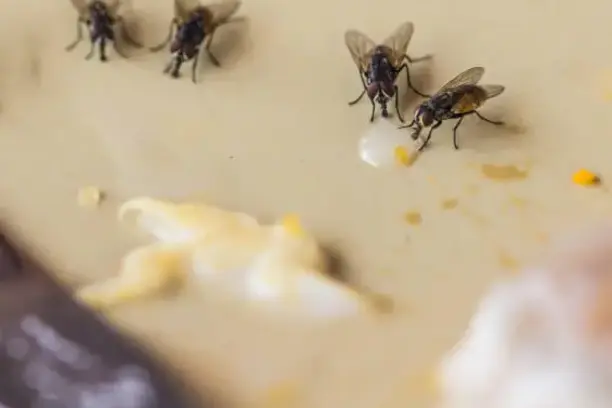
Houseflies are the most common type of compost flies. They are longer and bigger than whiteflies and vinegar flies. House flies are attracted to rotting organic filth such as rotting animal organs and feces in compost. They land on filth and may also land on human food, potentially causing food poisoning and dysentery.
Whiteflies
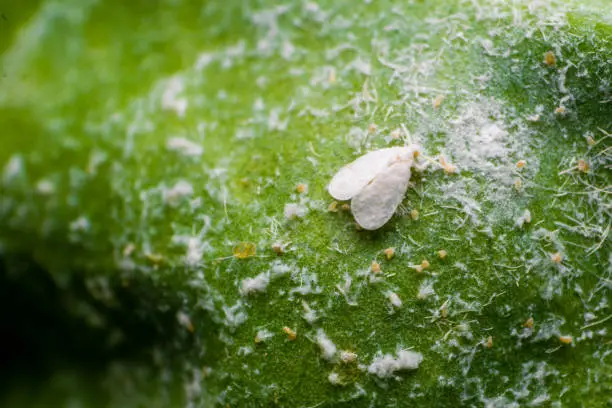
Whiteflies look like tiny triangular white moths, measuring about one-twelfth of an inch. The mostly encountered whiteflies in compost are Cabbage whitefly and Greenhouse whitefly. They will feed on the sap in freshly disposed of plant material but will move to feed elsewhere as soon as the materials are dead.
Whiteflies are not harmful to people or livestock. However, if they increase in number, they may cause significant damage to your plants and vegetables.
Soldier flies
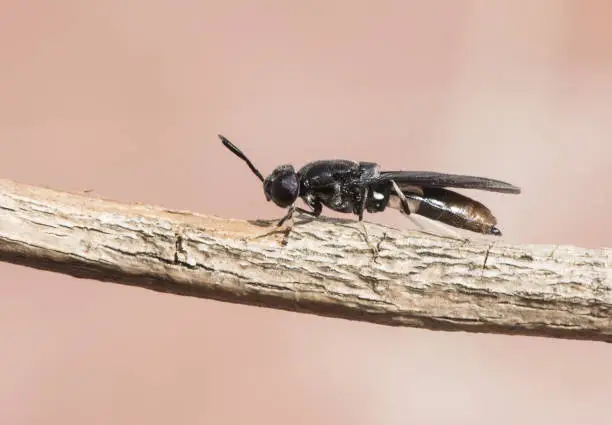
Soldier flies are about 5/8th inch long with bluish-black bodies and dusky wings. They easily resemble wasps but they’re not. Like houseflies, they are attracted to compost for food. However, they are not harmful. Instead, they can be very beneficial in breaking down household garbage. Soldier flies make it easy for worms to reduce the volume of the compost without producing an odor.
Despite showing some good qualities, you should get rid of flies in your compost because they are a nuisance and a threat to your health.
How to get rid of and control compost flies
A well-kept compost will not only discourage flies but also ensure your yard is not occupied with a foul smell.
Here are some ways to get rid of and control compost flies:
- Firmly cover the compost bin with a lid: Ensure that your compost bin has a lid. Close it tightly after every waste disposal. The eggs and the maggots inside the bin will not survive the heat and new flies will not emerge from your compost. Covering with a lid also protects your compost from getting soaked with rainwater.
- Rake the compost pile every day: Flies are common in compost because they find food and a favorable temperature for laying their eggs. Raking and turning the compost every day will subject the larvae and maggots in the compost to desiccation and death. As the compost dries and the flies move away, reduce raking to once or twice a week.
- Cover food scraps using brown material or a layer of fine mulch: If you don’t have a lid, covering fresh waste with fine mulch will make it hard for flies to reach the waste. Similarly, you could use brown materials such as dry leaves, wood chips, straws, or sawdust to cover the food scraps after every disposal.
Tip: Always have some brown materials ready beside your compost.
- Avoid throwing fish, meat, or chicken scraps in compost: These animal products rot and emit foul smells that will attract flies to your compost. Place these inside a garbage bag and tie it up. Alternatively, you can bury them in the center of your compost or burn them.
- Trap the flies in your compost: There are several ways and tools to trap flies in compost and they vary by the type of flies. For instance, wine and apple cider vinegar are effective against fruit flies. Pour the bait into a bowl or a bottle, cover it with plastic wrap, and poke some holes over it. The flies will get in and will not come out.
- Plant dense shrubs next to your compost: The dense shrubs will attract birds near your compost to act as natural predators against some types of flies such as the Vinegar flies.
- Cut vegetable items into smaller pieces: Reducing the sizes of the materials you dispose of in the compost increases their rate of decomposition. Quick decomposition means reduced odor and few flies to your compost.
- The ratio of the compost material: Compost is made of green and brown materials, which produce carbon and nitrogen. Materials with a lower carbon to nitrogen ratio are green and those with a higher C: N ratio is brown. Ensure that for every 30 parts of carbon sent to the compost, you balance it with one part of nitrogen to avoid bad odors that will attract flies to your compost.
Raise your compost’s pH level using hydrated lime: Instead of using fly-spray chemicals, lime offers a natural approach to getting rid of flies in your compost. Sprinkle hydrated lime over your waste and mix well. The lime will kill the fly maggots and also lower the acid level in your compost, thereby reducing flies and improving your soil fertility.
References:
[1] Aggie Horticulture College Station. (2009). Building and Maintaining a Compost Pile. Chapter 4.
[2] Cornell Composting Science and Engineering. Compost Chemistry.
